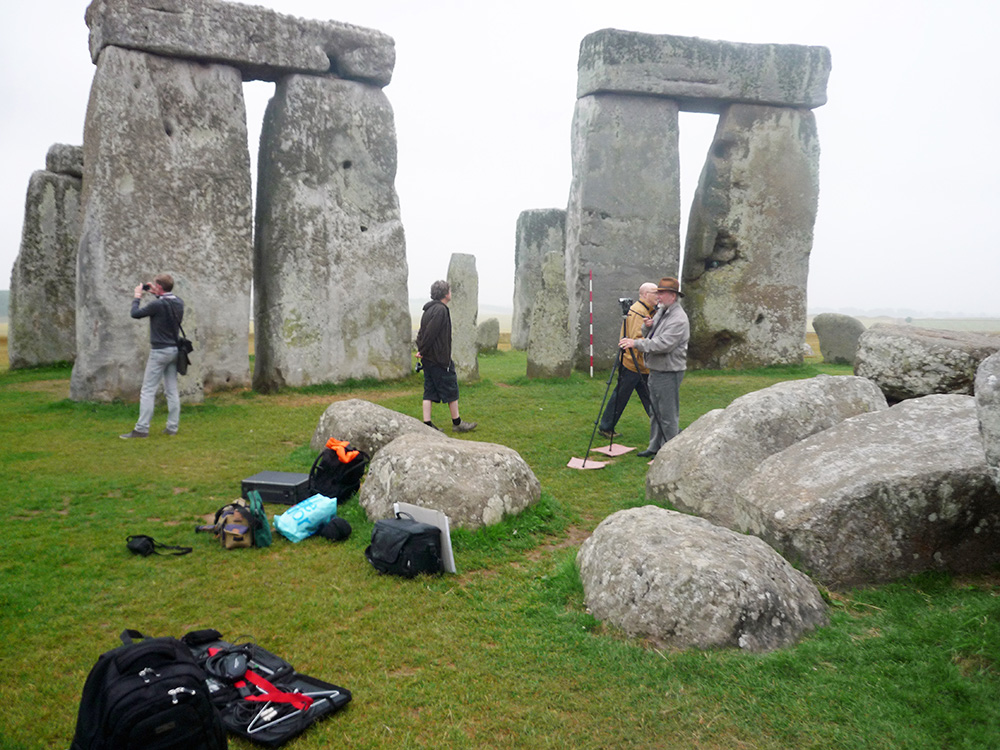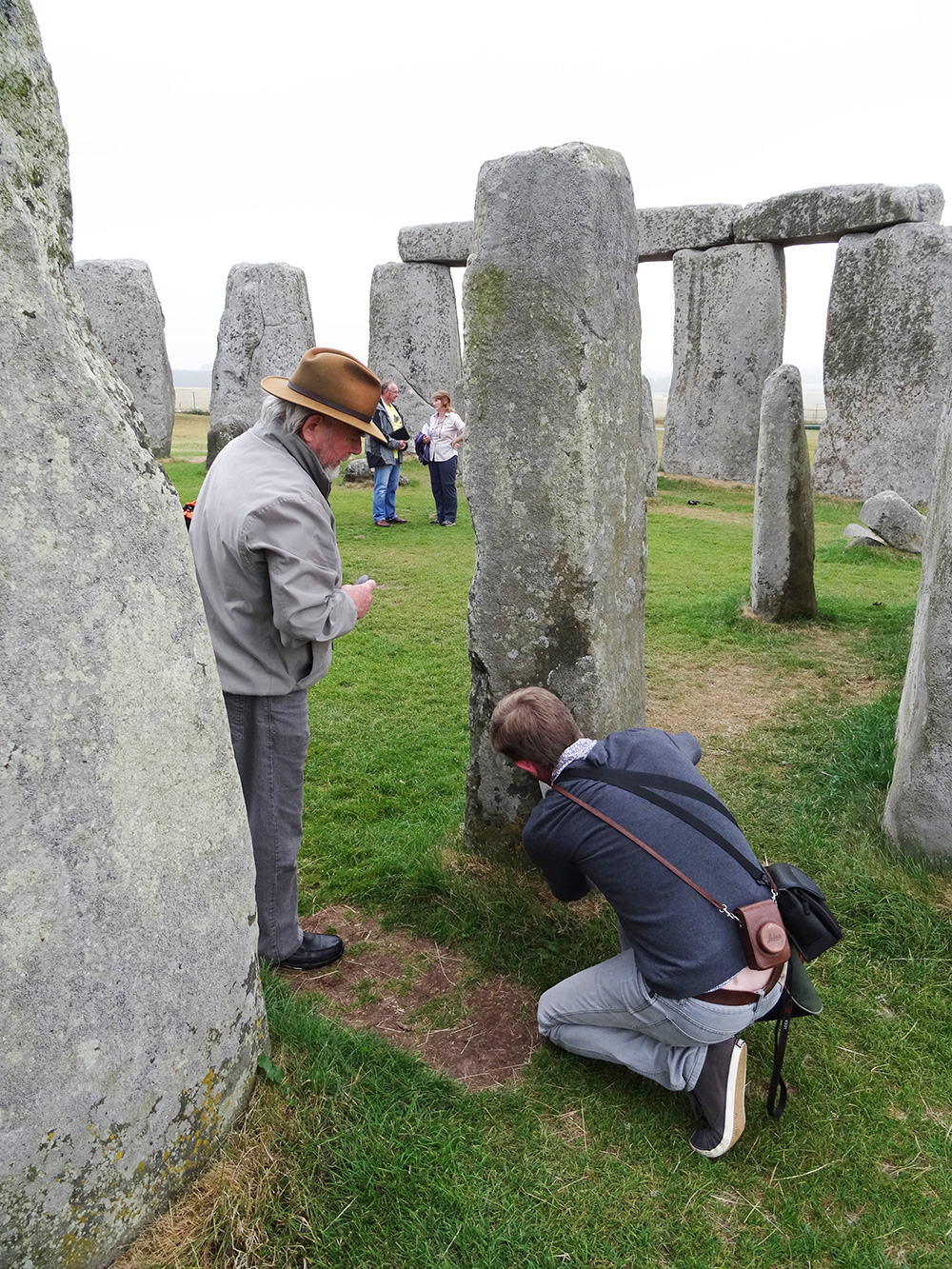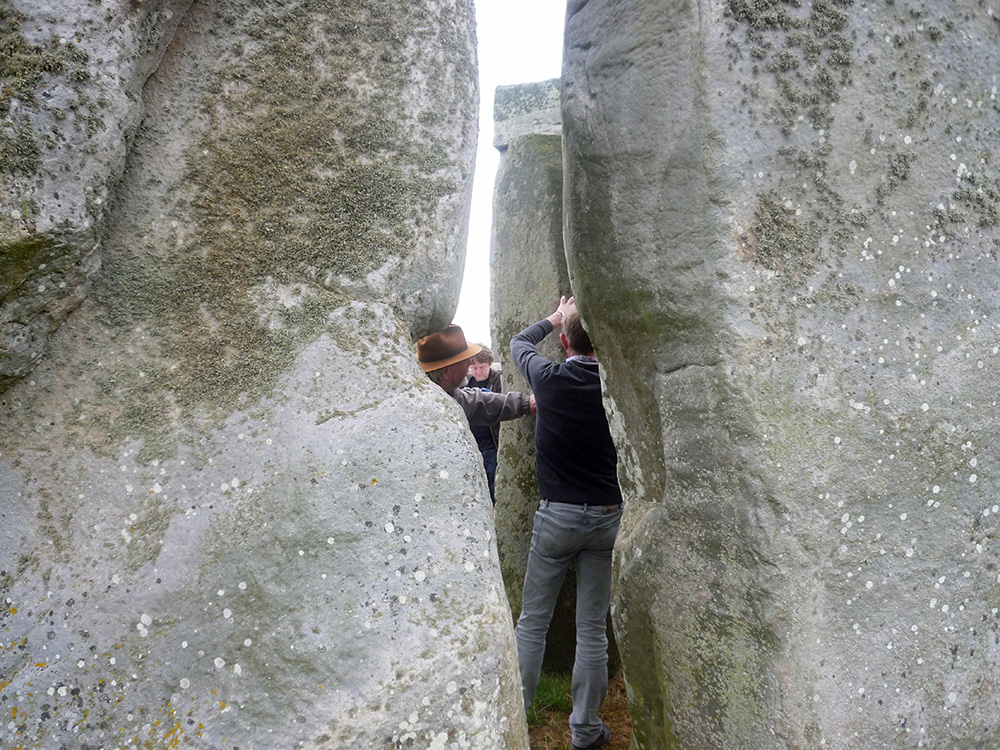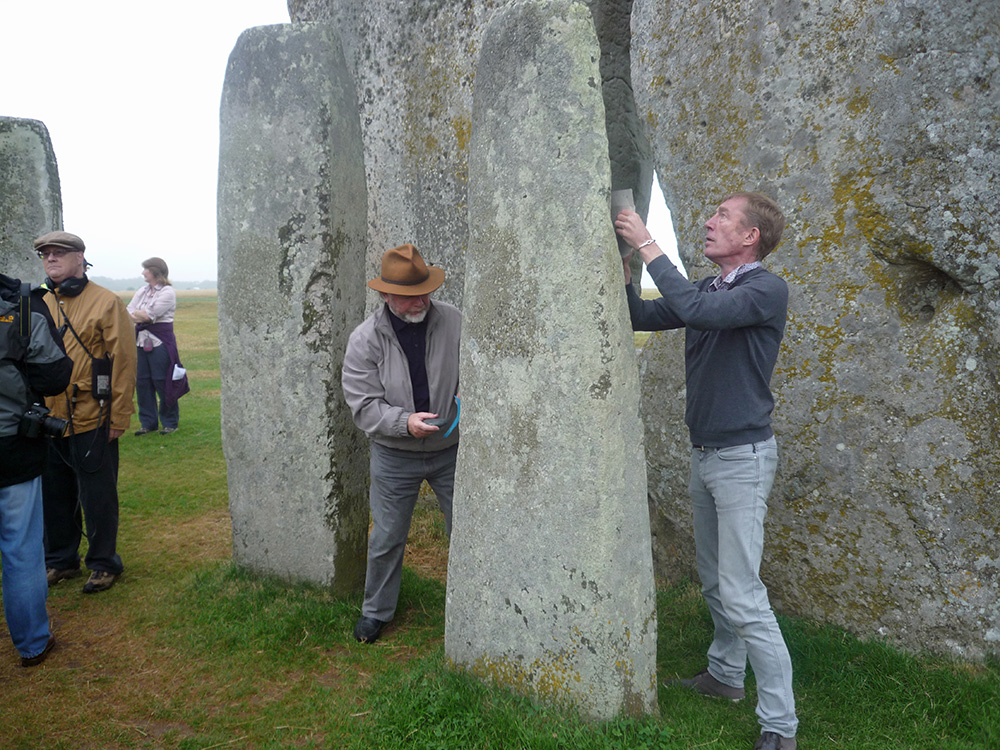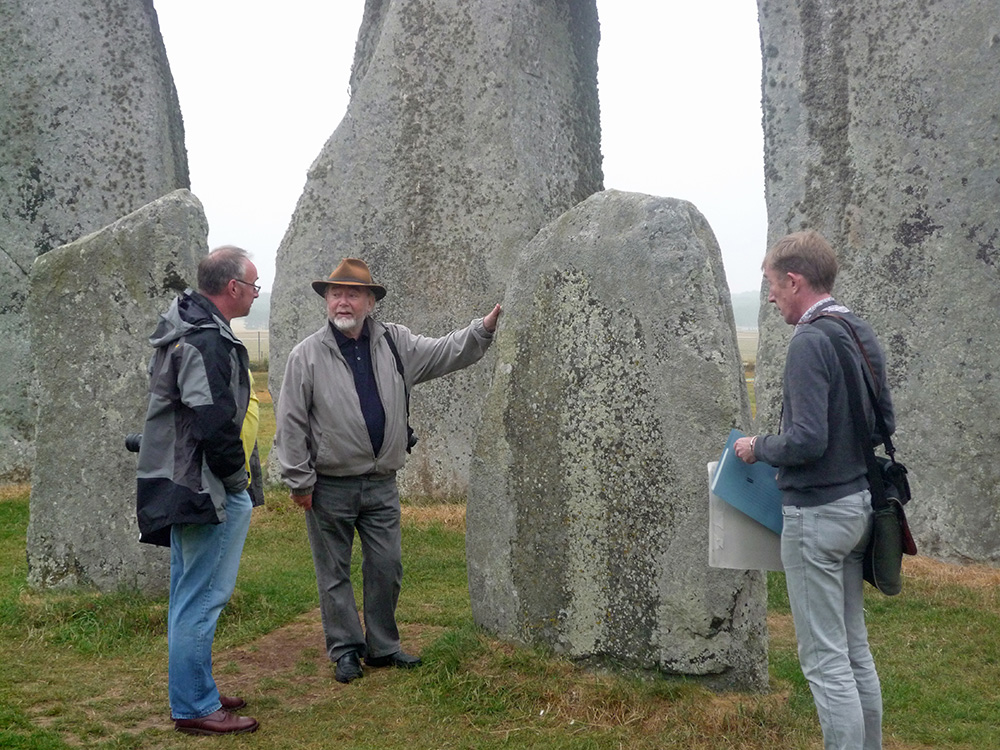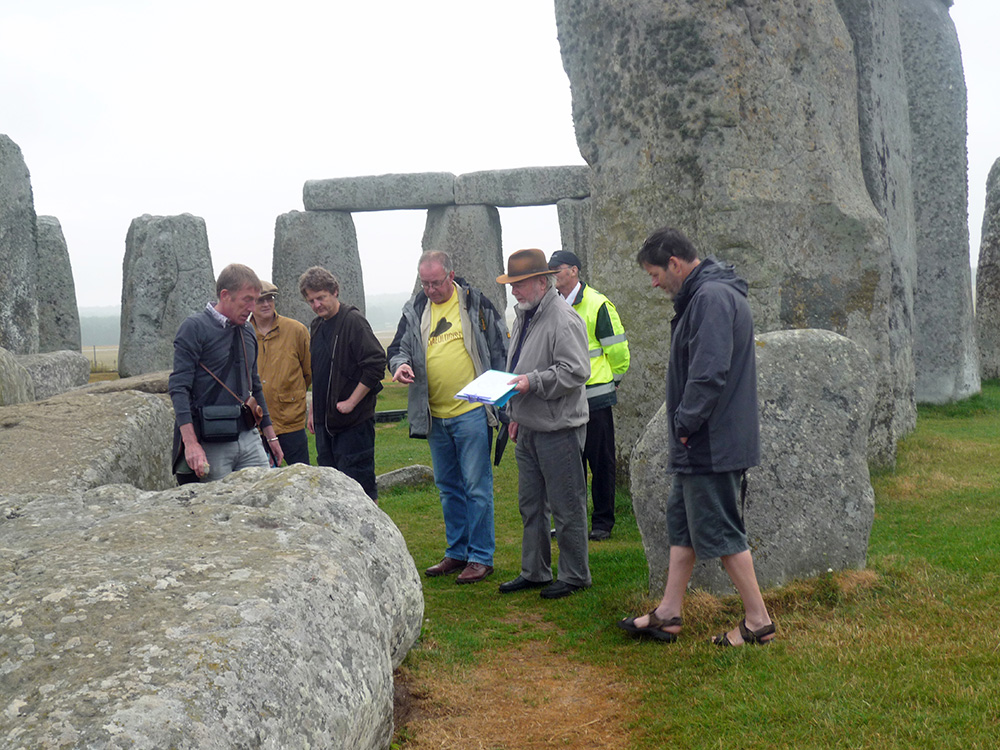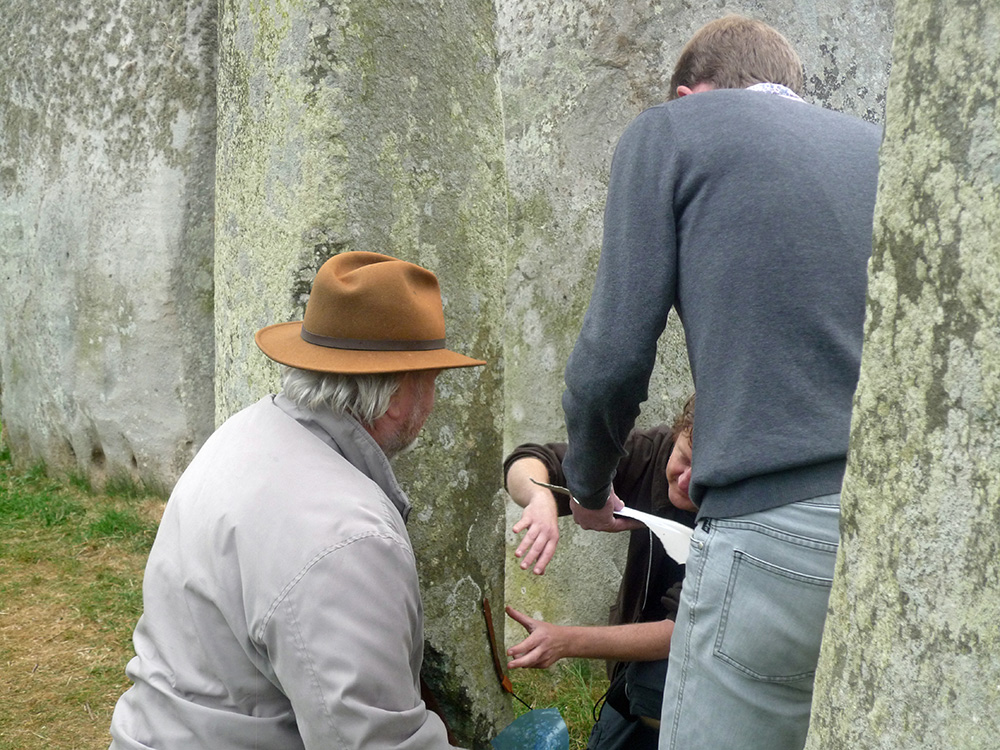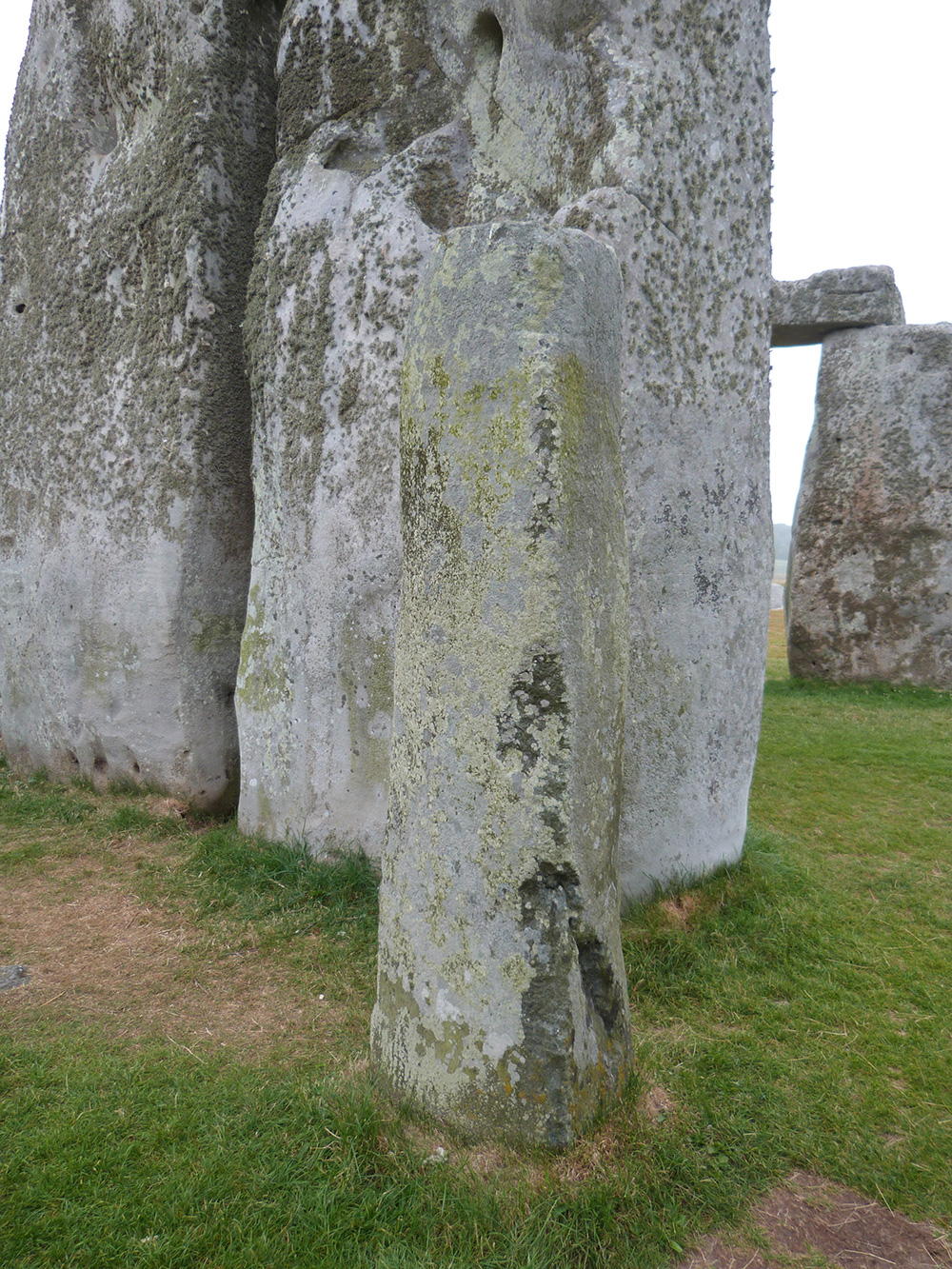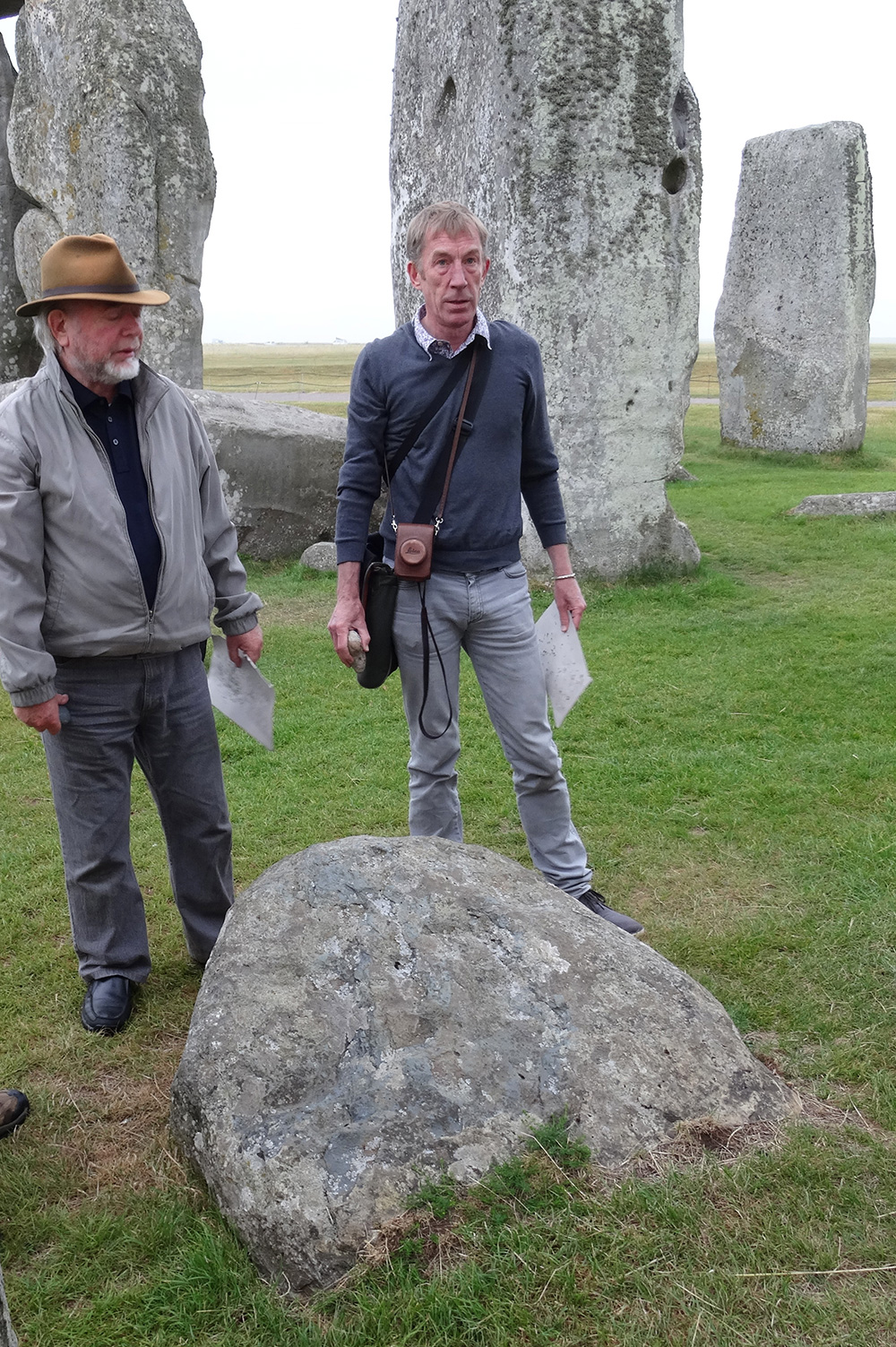Having explored the source area of the Stonehenge bluestones, it was inevitable that we would eventually need to visit the monument itself, and in July 2013, English Heritage granted permission to test the sound properties of the bluestones in situ, the first time on record this has been done.
We were not expecting to discover clear ringing tones of the bluestones at Stonehenge as is the case at Carn Menyn, because ringing rocks require air space around them in order to be able to resonate and so produce pure sounds. The bluestones at Stonehenge are, unfortunately from an acoustic point of view, set in the ground or even in concrete, which will dampen, mute, any resonant sounds they might otherwise possess.
The project team tested all the extant bluestones at the monument – those in the Outer Bluestone Circle and those in the Bluestone Horseshoe setting. It was found some made distinctive if muted sounds, indicating that they would have probably been full “ringers” if they had the resonant space around them. A few of the bluestones in particular (Stones 62, 45, 69, 70) were noted for such tell-tale sounds.
This being the case, the very fact that the bluestones came from the soundscape of Carn Menyn and Preseli in general, a clearly venerated area in prehistory, would in itself probably have invested them with special ‘mana’ or spiritual power in the minds of the builders of Stonehenge, because we know cross-culturally in the ancient world that spirits were believed to inhabit rocks and cliff faces and that shamans in trance were thought to be able to slip through the rock surface and contact the spirit world behind it. Sounds from rocks, such as echoes or musical/ringing sounds, would have been thought of as spirit communications – ‘fairy music’, if you like.
Bluestone Markings
Many of the bluestones at Stonehenge have been struck at some point in the past. These markings could be due to people centuries ago hacking off pieces for healing or good luck, damage during transit, or the result of attempts to dress the stones – or all these causes. Yet again, the markings could be due to attempts to make the stones ring at some point in the prehistoric past. As our lead archaeological consultant, Professor Timothy Darvill, remarks:
“One also wonders whether some of the evidence that is cited for ‘dressing’ the stones in the form of systematic abrasion could be the result of using the stone as a sound-source. Turned round the other way: the act of dressing the stones would have been a ‘noisy’ activity but could have been done rhythmically and perhaps even to a working beat (the example of sea-shanties comes to mind as a set of work rhythms to help get the job done). Finally, in thinking about the acoustic properties, one has to recognize that not only have the shape and form of the stones been changed as a result of stone removals, but that conservation and management of the site has led to some of the stones being set in concrete which would change the relationship they had with the ground. Many of the stones have fallen from their original upright position and are now grounders. What effect this would have on their ‘ringing’ qualities would be worth a little experimentation.”
The gallery of photographs on this page shows scenes during the Landscape & Perception project’s day of work at Stonehenge testing the acoustic properties of the bluestones in situ. On “The Stonehenge Bluestones Tests: Investigators’ Comments” page, there are video clips containing remarks on site at Stonehenge by the main investigators, Jon Wozencroft and Paul Devereux, along with archaeological advisor, Timothy Darvill, who was also present during the Stonehenge investigation.
Contributory photographs, with thanks: Charla Devereux, Mike Harding, Neil Mortimer.

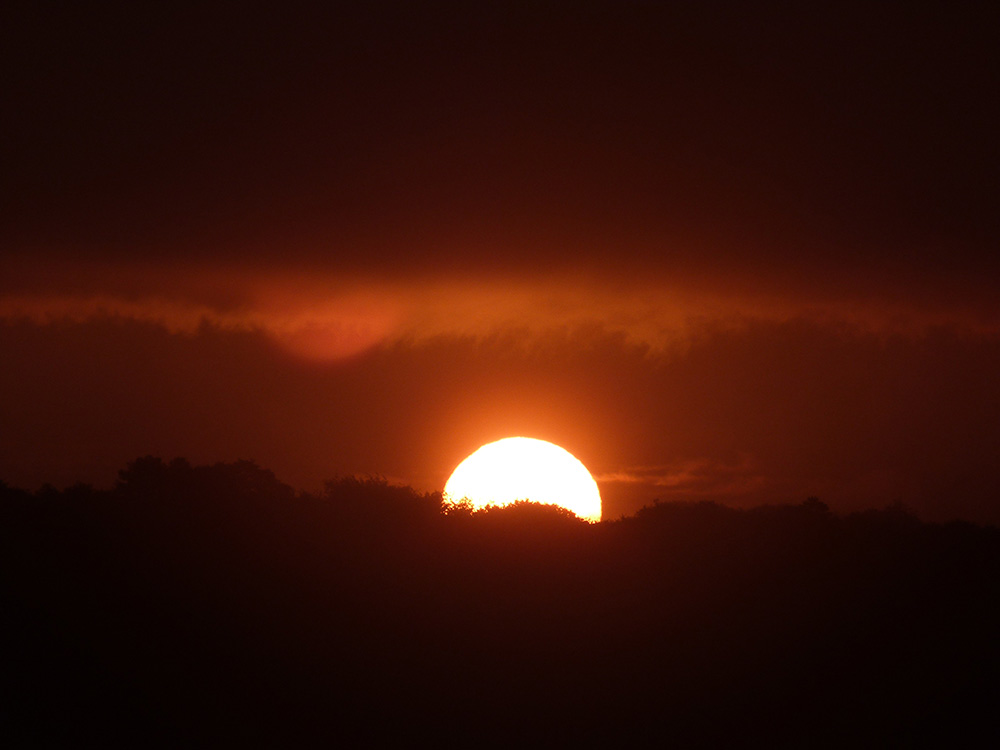 Sunrise seen from alongside Stonehenge on the morning of the Project’s work there. Unfortunately, the day soon greyed over!
Sunrise seen from alongside Stonehenge on the morning of the Project’s work there. Unfortunately, the day soon greyed over!
